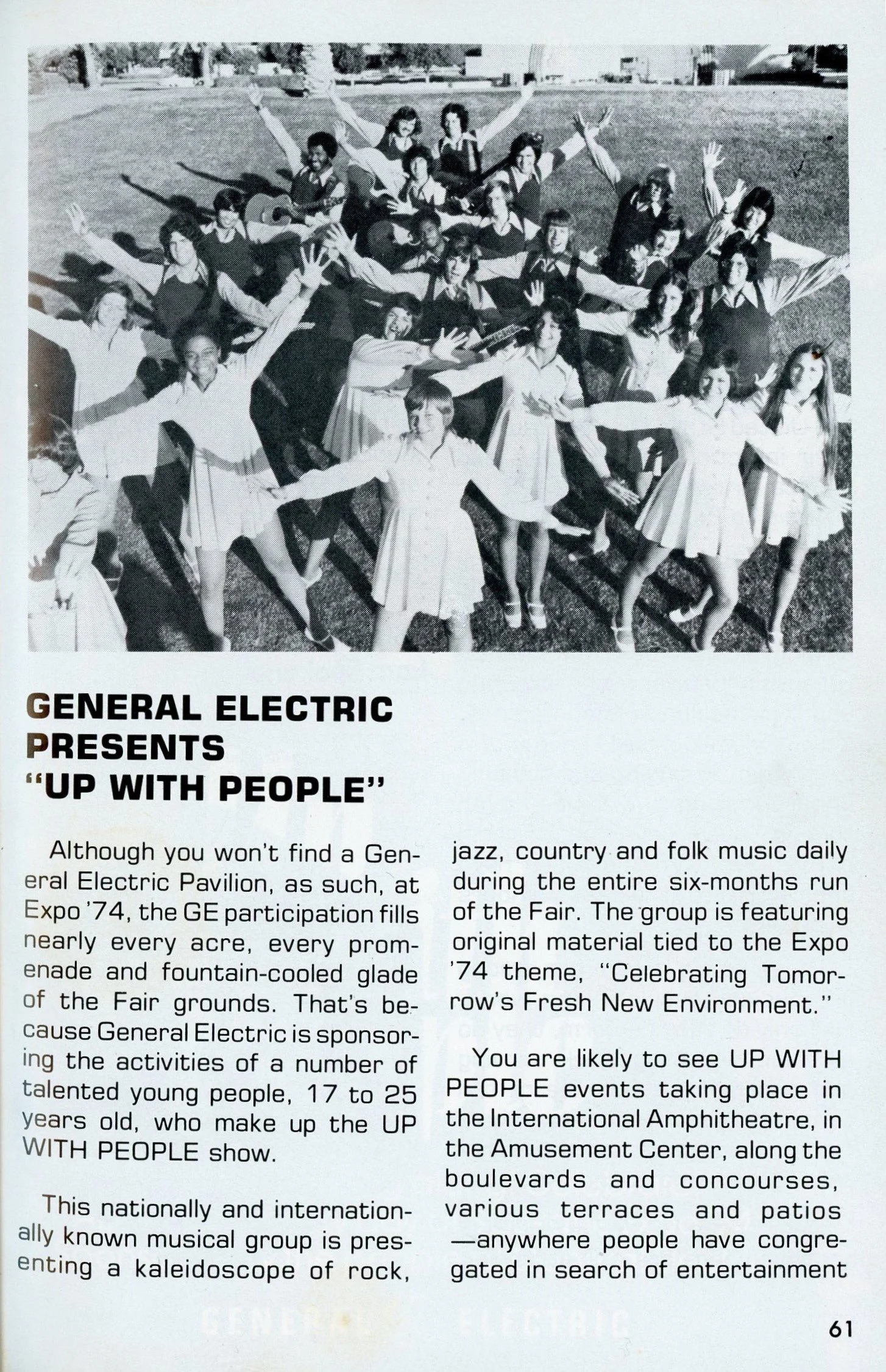Up With People (Energy Pavilion)
Few musical acts were as indisputably 1970s as “Up With People.” The group’s lineup was (and is) a constantly-rotating squad of enthusiastic young performers recruited to UWP’s “On Tour” program. In the program’s own words, “Up with People brings together participants from more than 20 countries for a multi-continent tour, immersing them in the local culture of each community. Through service projects, a dynamic musical show and a global education, we work to inspire youth to use their voice to be positive agents of change and become global citizens.”
Up With People was a happy, family-friendly good time for the performers and audiences alike. However, the secret to their longevity and success lay in their supporters behind the scenes: corporate backers and influential political figures. Up With People was a benign alternative form of youth music intended to counter the protest songs of the 1960s and 1970s. As Phil Ochs sang, “What are you fighting for?” and Pete Seeger sang “Bring ‘em home,” Up With People sang “Freedom Isn’t Free.” Sam Cooke proclaimed that “A Change Is Gonna Come,” but in “What Color Is God’s Skin,” the song’s narrator assures his inquisitive child that racial conflict is already “part of our suffering past.” The Up With People repertoire was perfectly calibrated to be the kind of advertiser-friendly pablum that lets an act play four Superbowl halftime shows (1976, 1980, 1982, and 1986), two World’s Fairs (Expo ‘74 and Knoxville’s 1982 fair), and two presidential inaugurations (Nixon’s in 1969 and George H. W. Bush’s in 1989).
The performers of Up With People were young, diverse, and idealistic; the funders of Up With People were none of those things. Over the years, the group was sponsored by corporations like Exxon, Enron, Coca-Cola, and Halliburton. At Expo ‘74, it was General Electric footing the bill. While the Official Guidebook describes the group performing all over the fairgrounds, it appears that the act could primarily be seen in the Energy Pavilion, doing five shows a day on Monday through Thursday, six shows a day on Friday, and seven shows a day on Saturday and Sunday. Each high-energy performance was about 20 minutes long, but performers often stayed afterward to interact with the audience.
Regardless of the profits and politics behind the scenes, Up With People appears to have been a very positive experience for its performers and audiences. Young people who were accepted to the program would be trained and added to one of UWP’s touring troupes. In addition to their stage performances, UWP participants would also do service projects on behalf of their host communities. Most tours visited several different cities or countries, in which the young performers would stay with host families and participate in cultural activities. Most did not aspire to show-business careers, and the typical performer stayed for six months or a year. Around ten percent of performers would remain each year to provide continuity and leadership for the new recruits.
Based on newspaper articles, UWP sent somewhere between 20 and 30 performers to Expo, of whom around 15 would perform in any given show. They stayed in student housing at Gonzaga University. Prior to settling in Spokane for opening day of the fair, the troupe toured to Alberta, British Columbia, Idaho, Montana, and other parts of Eastern Washington. The original set of performers were replaced in July by a freshly-trained batch of youths.











